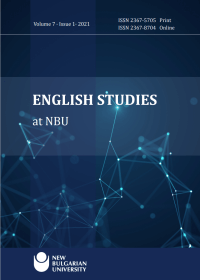Identity and Diasporic Trauma in Mira Jacob’s “The Sleepwalker’s Guide to Dancing”
Identity and Diasporic Trauma in Mira Jacob’s “The Sleepwalker’s Guide to Dancing”
Author(s): Jameel Alghaberi, Sanjay MukherjeeSubject(s): Social Sciences, Language and Literature Studies, Education, Foreign languages learning, Semiotics / Semiology, Essay|Book Review |Scientific Life, Theoretical Linguistics, Semantics, Comparative Linguistics, Higher Education , Cultural Essay, Philology, Translation Studies, Theory of Literature
Published by: Нов български университет
Keywords: Assimilation; memory; identity; trauma; diasporic experience
Summary/Abstract: This article explores the assimilation politics in Mira Jacob’s novel The Sleepwalker’s Guide to Dancing (2013). The intersection of memory, trauma, and mourning with reference to immigrant experience is discussed. In terms of assimilation, Barkan’s six stage model is critiqued, and diasporic ‘hybridity’ is proposed as an alternative to the notion of total assimilation. In the analysis of traumatic experience, the paper makes reference to Caruth’s formulations of the ‘abreactive model’. The Sleepwalker’s Guide to Dancing is a transcultural text that represents the gap that truly exists between the first-generation immigrants and their offspring. It is a typical trauma novel featuring timeless and unspeakable experiences. The novel does not present a postcolonial collective trauma but invariably an example of diasporic imagined trauma. By presenting two contrasting generations in her novel, Mira Jacob attempts to highlight the dilemmas that baffle diasporas in the United States particularly of those that resist assimilation. Much of the narrative projects the haunting presence of home, and the anguish of personal loss experienced by first generation immigrants. Moreover, the novel questions the nostalgic and romantic engagements with the past and it promotes a bold affirmation of the culture of the adopted land. In other words, Mira Jacob calls for more genuine engagements with the new culture that the second and the third-generation immigrants are more exposed to than their home culture because their in-between status leaves them with no choice.
Journal: English Studies at NBU
- Issue Year: 7/2021
- Issue No: 1
- Page Range: 51-68
- Page Count: 18
- Language: English

